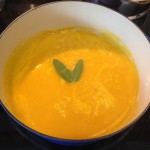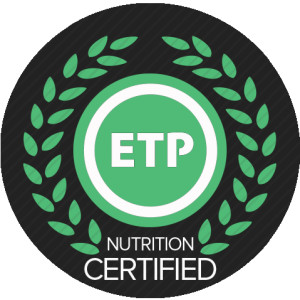When dollars count, how can you justify so much to buying organic? Does it really matter, and why all the sudden is this such a big deal? Is it the next trendy marketing scam to get people to waste billions?
When I was growing up, no one spoke of organic versus conventional, and less expensive was always the way to go. Why would anyone pay more for food when they don’t have to? This is a decision everyone has to make individually. The major downside of going organic is obviously the cost. In general, organic labels are seen with smaller farms, so their cost per unit is higher. My goal is just to inform you of what’s out there, what’s in conventional versus organic foods, and leave you to make the best choice for your particular situation. It would be great if we could all eat completely organic (without having to take out a second mortgage). Now, how do you determine where to spend your hard earned dollars to maximize the benefits for you and your family, and what other options are out there?
Aside from Organic, pesticide free is a good choice. Because the organic label takes so long for famers to attain, and the soil has to be pesticide free for a number of years before they can claim organic, farmers will sell in the interim, with this label. I think its a great and viable option to make sure you’re not putting harmful chemicals into your body, while also supporting these farmers that are doing the right thing. The other label that helps us to distinguish a cleaner option, is GMO free, or non GMO project verified. This means that while the organic label may not be present, the ingredients or produce are not genetically modified.



So now lets take a look at some food categories and see what the industry is currently sneaking into our conventional food. What are the possible health issues associated with buying conventional versus organic, if any, and is it worth the extra cost?
Lets start with produce. We’re talking fruits, vegetables, nuts and seeds here. Conventional produce is laden with pesticides, herbicides and fertilizers. Even the EPA admits that pesticide use can cause birth defects, nerve damage and cancer. They also acknowledge that because children are so much smaller, the effects of these chemicals on them, is even greater. Pesticides are also not water soluble, meaning, they are made to not wash off produce easily (so that when it rains, the pesticides aren’t washed off). This in turn means that our bodies don’t easily excrete them in our urine. Our fat cells trap these toxins to prevent them from doing damage, and over time, they accumulate in our bodies. While the EPA says that there are regulations on how much toxin is allowed on our foods, no one wants to talk about the effect of years of consuming these chemicals. The Environmental workman’s group updates the dirty dozen every year. Meaning, they put out a report of the most highly sprayed produce, to the lowest. Apples, strawberries, grapes and potatoes are high on the list, just about every year. So if you need to pick and choose what to buy organic, the best option is to buy the items at the top of their list organic, and if need be, choose conventional for the produce that is towards the bottom of the list. That way, if you can’t eliminate convention/pesticide sprayed food, at least you’re minimizing. A good general rule of thumb if you don’t have the guide handy is, if you’re going to eat the skin, or outer layer, try to find organic. If you buy conventional often, purchase a fruit and vegetable cleaner (insert amazon link), or make one with equal parts vinegar and water. I like to soak my produce in this solution, scrub or wipe down, and rinse. Doing better for yourself isn’t about being perfect, it’s about the process. Doing the best you can, is what it’s all about.
Now what about meat and dairy? First, let me explain the label GMO. This stands for genetically modified organisms. What this means is that your food has been genetically modified, or bio engineered. The implications associated with the consumption of GM foods include; allergic reactions, cancers, and degenerative diseases, yet, they are currently in many convention foods. For instance, papaya, unless organic, is almost always going to be genetically modified. If you buy organic, this label also means that is has not been genetically modified. You can also look for that “non GMO project verified” label as well. If you buy conventional meats, you’ll often see a label that says “fed vegetarian feed”. While this is great, because it means they weren’t fed bone meal and other animal parts, the vegetarian feed is mainly, GMO soy and corn, two of Monsanto’s (link to a Monsanto page) biggest crops. In short, they were fed genetically modified, pesticide and herbicide (glyphosate) covered feed, their entire lives. This is what you are paying to ingest. Pesticide and herbicide buildup in our bodies have shown devastating results. Neurological disease, autoimmune diseases, cancers, you name it, pesticides are killing us. But don’t worry, the pharmaceutical industry will save us, with more chemical cocktails (will delve into this in a future post). As for conventional dairy, we have the antibiotics and rbst (a growth hormone) fed to cows, to prevent disease and increase milk production. Ever heard of superbugs? Antibiotic resistant bacteria? Repeatedly using and taking in antibiotics has been causing these organisms to change and adapt so that when we do get sick and take antibiotics, viruses are immune to them.
Lastly, let talk about conventional Processed foods. What’s there to say except, MINIMIZE! Seriously, aside from the pesticide ridden, GMO, wheat, corn, soy, canola and sugar beets, that are thrown into these products, they throw in sugar, msg, and gluten to hit the pleasure centers in your brain, keeping you eating (and buying). This is where you need to take the time to read labels. And you need to become familiar with all the names companies use to throw chemicals into your body without you knowing. Did you know that msg (monosodium glutamate) can be labeled about 30 different ways? These ingredients either contain, or are used as another name for sneaking in msg.
- Glutamic acid
- Glutamate
- Monopotassium glutamate
- Yeast extract – also autolyzed yeast or yeast nutrient. Always contains msg and is one of the most common ways the food industry is avoiding using the word glutamate
- Hydrolyzed protein (whether vegetable or animal)
- Natural flavor (I can’t tell you the number of times I see this at the bottom of an ingredient list)
- Seasonings
Here, you can read about 35 more products and ingredients containing msg and additional names for this deleterious additive. This is just one of the many ways the food industry is tricking you into compromising your health and buying their product. MSG can cause many reactions, including tripling the amount of insulin the pancreas produces (causing you to become obese), as well as allergic reactions, including chest pain and migraines. Here are some other issues associated with MSG. Scary enough for you? MSGs sole purpose is an additive put in foods, because it’s addictive. Have you ever eaten chips (“betcha can’t eat just one”), fast food, or any other commercial processed food, and after you put it down, felt like you needed more of it just a little while later? That’s MSG. As mentioned before, sugar as well as gluten, have been shown to be highly addictive, and light up the same centers in the brain as opiate(heroin, morphine) drugs. Many foods that don’t need these additives at all, contain them, because it’s good for business. Now, just because you buy organic cookies, doesn’t mean it’s a free for all. Organic chips, cookies, crackers, and cereals, may still contain fat, sugar, and excess salt. Processed foods are a conglomerate of ingredients, and regardless of their conventional or organic label, you should know what’s in them.
The real drug war we have going on, is with the food industry. It’s legal, and the majority of consumers are completely unaware that they’re consuming it. I think it’s time to go through withdrawal and get clean, don’t you?
This is scary stuff we’re talking about here. On a daily basis, we consume foods that are laced with chemicals and GMOs, that either have well known hazards to our health, or they haven’t been studied long enough to know their detrimental effects. Yet the government allows this to happen. Massive companies like Monsanto (one of the biggest influences in the food industry), put in massive amounts of money, to influence what’s deemed acceptable to put in our food (and subsequently on our tables). Our only defense is to arm ourselves with information, and put our money into the products that aren’t killing us. Start by making small changes. The first step I would recommend for making a transition away from conventional foods, is to start by buying the foods at the top of the EWG list, organic. Buy your meats organic or grass fed, and choose organic dairy whenever possible. Additionally, start to steer away from processed foods. Start with even 1 meal a day, or changing up your snacks. A great way to get amazing food that’s organic (or pesticide free), in a cost effective way, is to go to your farmers markets. Make sure you’re asking about what they use on their farms, and benefit from the cost effectiveness of going to get your food, instead of having to pay for food being hauled into the supermarket from across the country. Also look into organic CSAs (Community supported agriculture), and other local organizations that are bringing you real food, straight from the farm. Buying your organics in bulk is also a great way to save. In terms of packaged foods (organic coconut milk, organic oats, etc.), I use subscribe and save on amazon. I save first, because I’m buying a large quantity, and then I save an additional 20% for making it a recurring delivery. If you look, you can find ways to make eating organic, and eating healthy, more affordable than you originally thought.

Seize Every Moment!




















